Kachina dolls are an important part of Native American culture, and they have become a part of our everyday lives as well. Have you ever looked at one of these adorable little dolls and wondered what it was? Where did they originate? What is their meaning? How much are they worth?
This article will provide the answers to any questions that you may have concerning kachina dolls. Now, let us examine the dolls and their significance.
Table of Contents
What are Kachina Dolls?
There is more to Kachina dolls than the fact that they are made from cottonwood roots. The majority of these dolls are made by Native Americans due to their cultural significance.
Kachina dolls can be traced back to the Native American Hopi people. The Hopis believe that Kachina spirits (immortal beings) bring rain, act as messengers between the human world and the spirit world, and control many aspects of society, which is the symbolic meaning of a kachina doll.
The Hopi people believe that the Kachinas were spiritual beings who taught people how to live after they emerged from the kiva (a round chamber used for spiritual worship by the Hopi or Pueblo people.
It is believed that these spirits now reside on Mount Humphreys. They also believe that the spirits are crucial to their way of life, so they create dolls in the likeness of the kachina spirits they worship.
They also have a tradition of giving Hopi girls kachina dolls to educate them on the katsinas (Katsina is another name for Kachina).
Prior to their ceremonies, their men create figurines of each katsina required for that particular ceremony, which are then given to their young girls on the day of the ceremony.
The daughters are expected to examine the Kachina doll and understand the characters of the Katsina the doll represents.
The Evolution of Kachina Dolls
Kachina dolls gained popularity in the late 1800s after Dr. Palmer, a U.S. Army surgeon, collected a kachina doll and presented it to the National Museum. It captivated military personnel and government agents, and it increased public interest in the Hopis.
These dolls have evolved since then, and are divided into two distinct periods based on their styles.
The Traditional Era
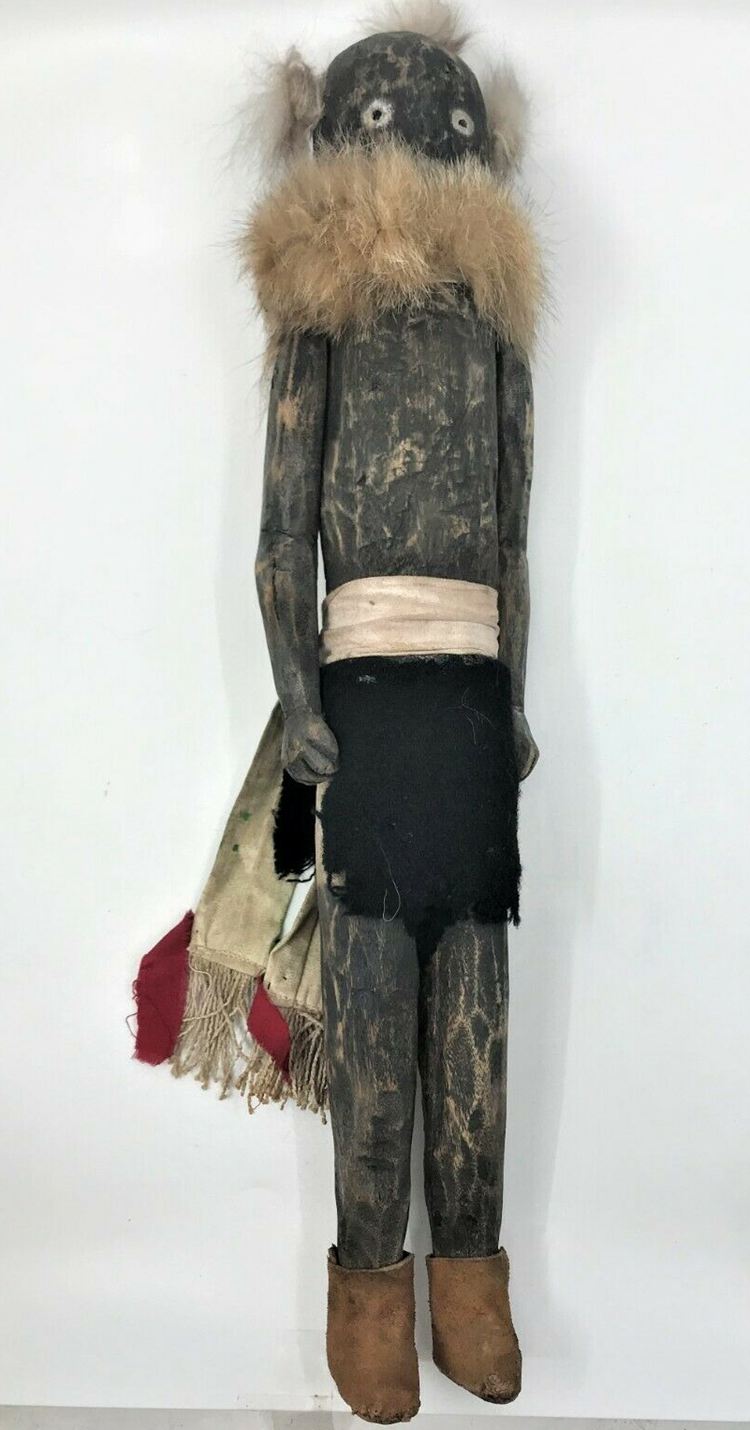
The traditional era spans from 1850 to 1930. In this era, a kachina doll would be carved from a single cottonwood root. There were no distinctive features, and only the facial features would indicate that it was a kachina doll.
Lack of sandpaper and other wood finishing tools made it impossible to create smooth-surfaced dolls. As a result, the majority of dolls made during this period had rough surfaces and noticeable flaws, some of which were poorly concealed with kaolin clay.
Also, it is important to note that figurines of this era could only be hung on walls; there was no need to create standing figures at the time. Towards the end of the 1800s, kachina doll artists started to give dolls a more natural look.
However, commercial production declined in the early 1900s as Hopi grandfathers (elders) decided that tourists were not worthy of witnessing their religious ceremonies after an oppressive agent decided to stifle the Hopis’ religious and cultural rights.
In the traditional era, the dolls were sold for approximately $0.25 per unit.
The Action Era
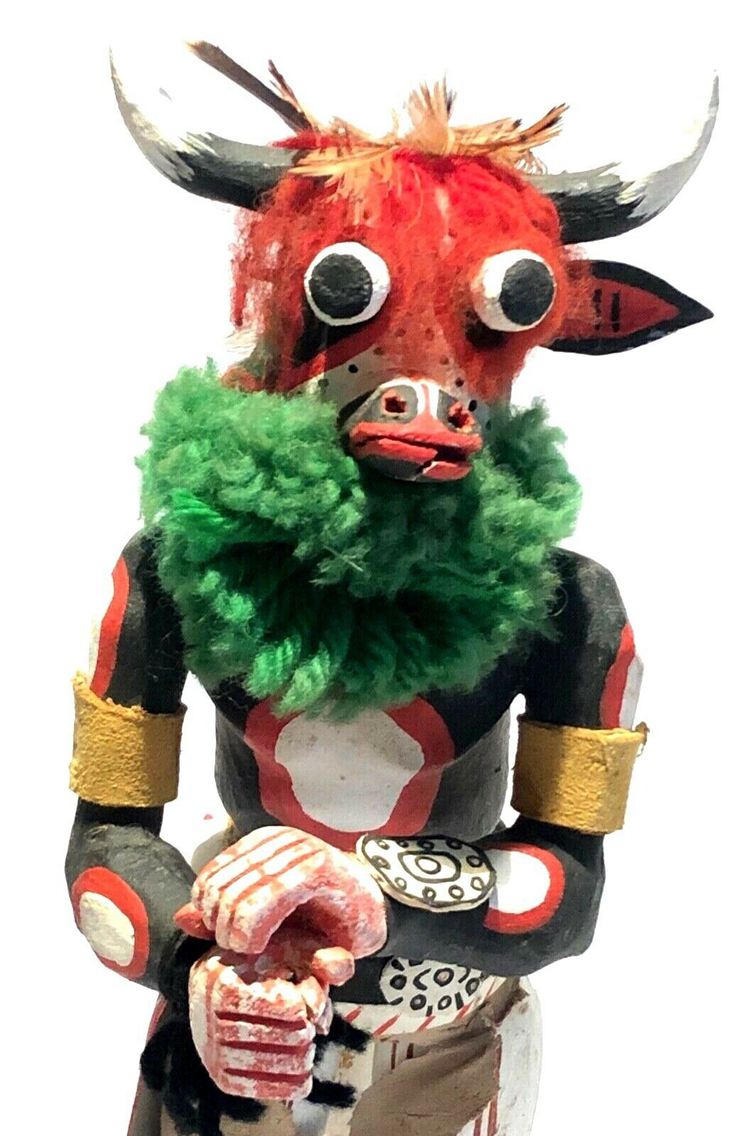
The action era, which began in the mid-20th century, is still going strong. When the Hopi regained their independence in 1934, there was a resurgence of interest in the dolls, and tourists flocked to the area again.
With renewed interest came renewed detailing, and the figurines started to look different than they did in the traditional era.
During this era, kachina dolls began to take on more distinctive physical characteristics, such as a more pronounced head, the arms becoming separate from the body, and the dolls were carved in such a way that action poses could be deduced.
Real clothing was worn for the dolls, and the regalia (clothing) started to become a little more befitting. Prior to 1945, a doll was sold at an average price of $1 per unit.
The late action era began in 1945, and there were significant changes in kachina dolls. First, the dolls had more realistic body proportions and were easier to distinguish between body parts. The regalia was also more detailed.
Then, in the 1960s, artists began creating bases or stands for the dolls so that tourists who purchased them did not have to hang them on their walls.
Feathers from protected species, such as the eagle, were banned from use in the production of kachina dolls and other ornaments in the 1970s.
Doll artists became creative and began carving out feathers on the dolls, resulting in a new Hopi art form known as kachina sculpture. Because of these and other daring changes made since then, the price of kachina dolls has skyrocketed and is now priced between $10 and $10,000.
Katsina Dolls in Recent times
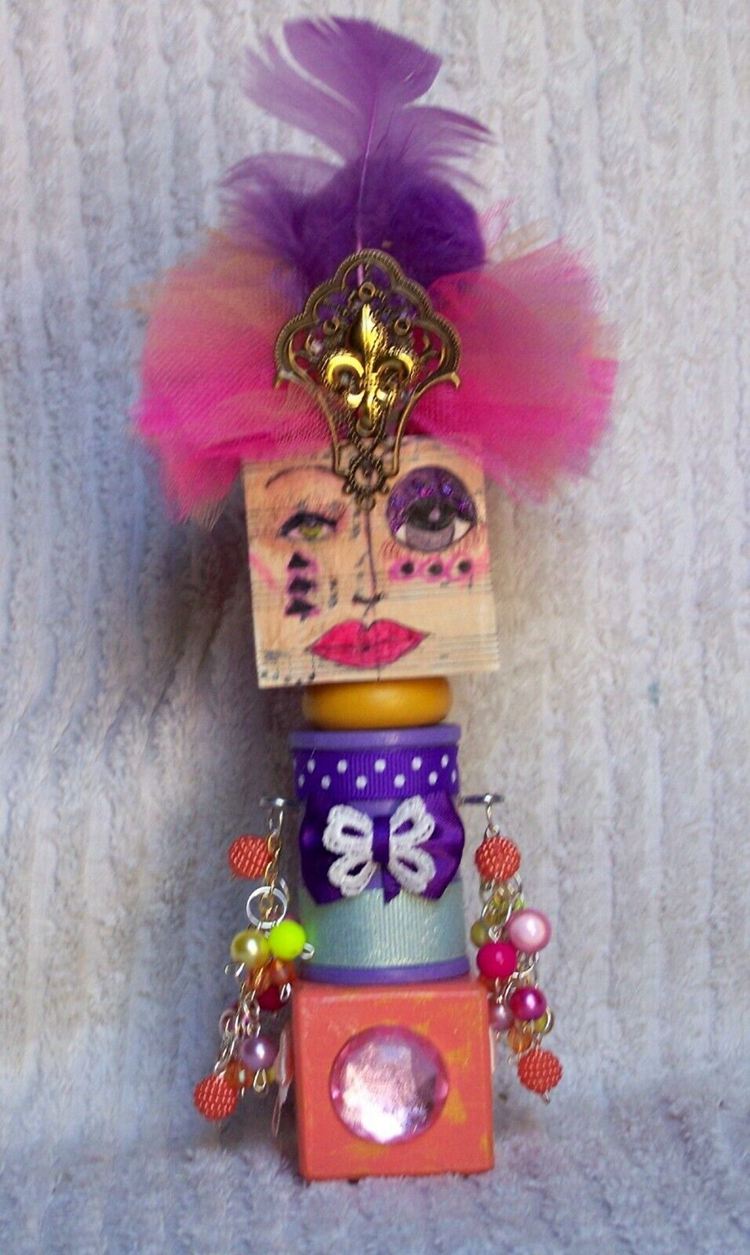
Although the production of a kachina doll began as a cultural practice, it has become increasingly commercialized.
Kachina artists now make dolls that bear little resemblance to kachina spirits. Their works do not reflect the devotion of the past. Cultural ceremonies are still held, but on weekends when people are less busy.
The dolls are more elaborate than the old ones but usually less expensive, and women are becoming involved in the making of kachina dolls, as opposed to the traditional era when only men made these dolls.
You can find a large collection of Hopi Kachina dolls at the Heard Museum in Phoenix and the Southwest Museum in Los Angeles. A portion of the dolls are also housed in the British Museum.
Different Kachina Dolls and Their Meaning
Kachina dolls have been popular since the mid-19th century, and over 250 unique styles of the dolls have been produced.
As there has not been a particular manufacturing company producing them, the natives have been the ones making them over the years. We will take a look at some of the kachina dolls and their meanings.
The Corn Maiden Kachina Doll
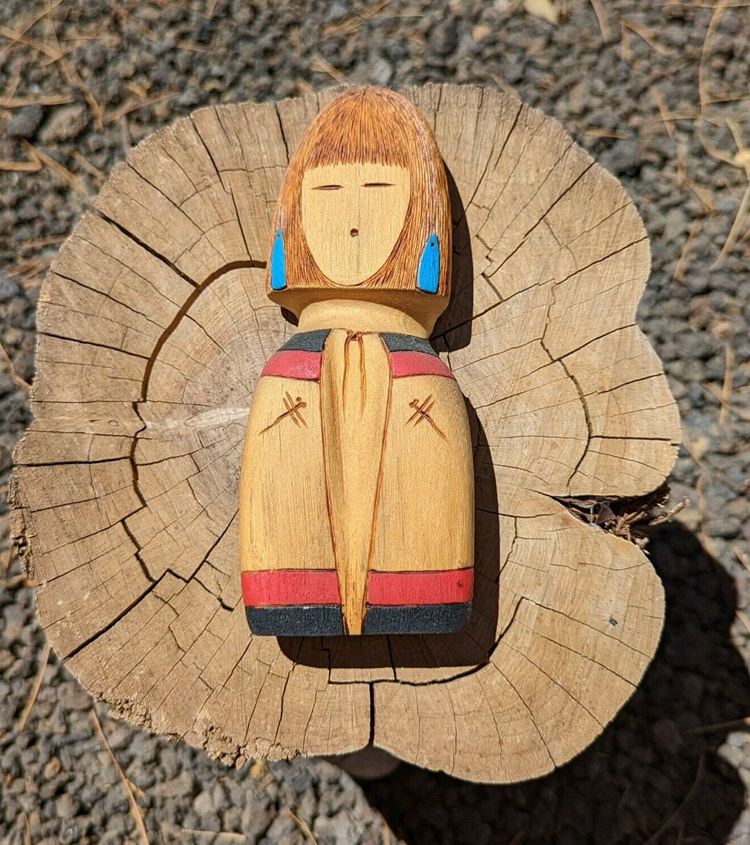
Many Native American stories feature the “corn woman” (maiden), typically portrayed as a female Kachina or a Kachina mana.
The tales portray the corn maiden as a heroine, and she appears in a variety of forms, from bride to ogress. She has also been depicted as a witch, the daughter of a chief, and a bear woman.
Kokopelli Kachina Doll
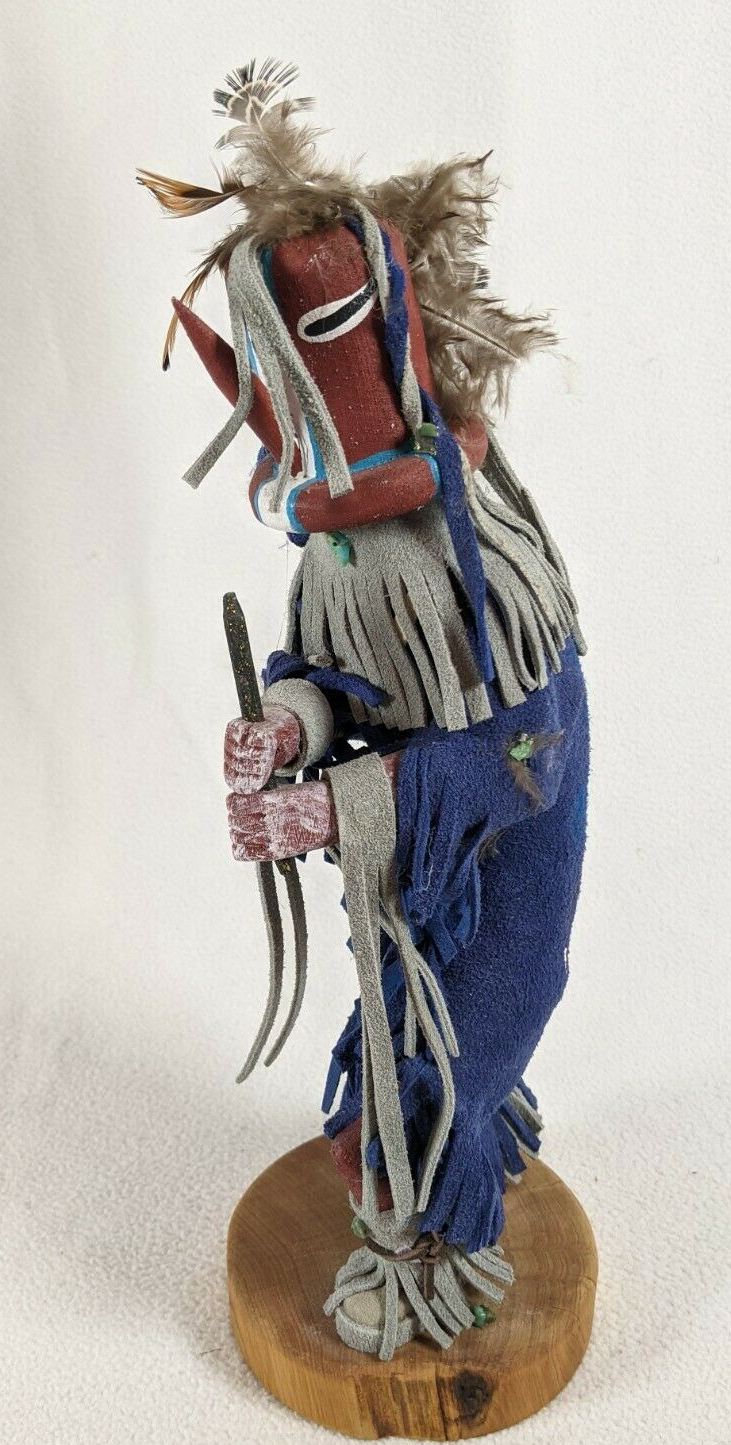
Kokopelli is depicted as a flute player with a humpback. His origins and history are speculative, but he appears in many Hopi stories as a Hopi Kachina and is portrayed as a seducer of girls, a bringer of babies, and a hunting patron.
Kokopelli has been incorporated into a number of native American art forms, including jewelry and pottery.
Heluta Kachina Doll
Heluta is considered the father of the Kachinas and is widely recognized as the creator of deer. During Kachina dances, Heluta is always the first to appear. He appears and announces other Kachinas to the people.
Kobictaiya Kachina Doll
According to legend, Kobictaiya only appears during the winter solstice ceremony. The winter solstice ceremony is intended to increase fertility and help heal the sick. The Kobictaiya are thought to live in a crater at Acoma or in the east at sunrise.
Soyok Kachina Doll
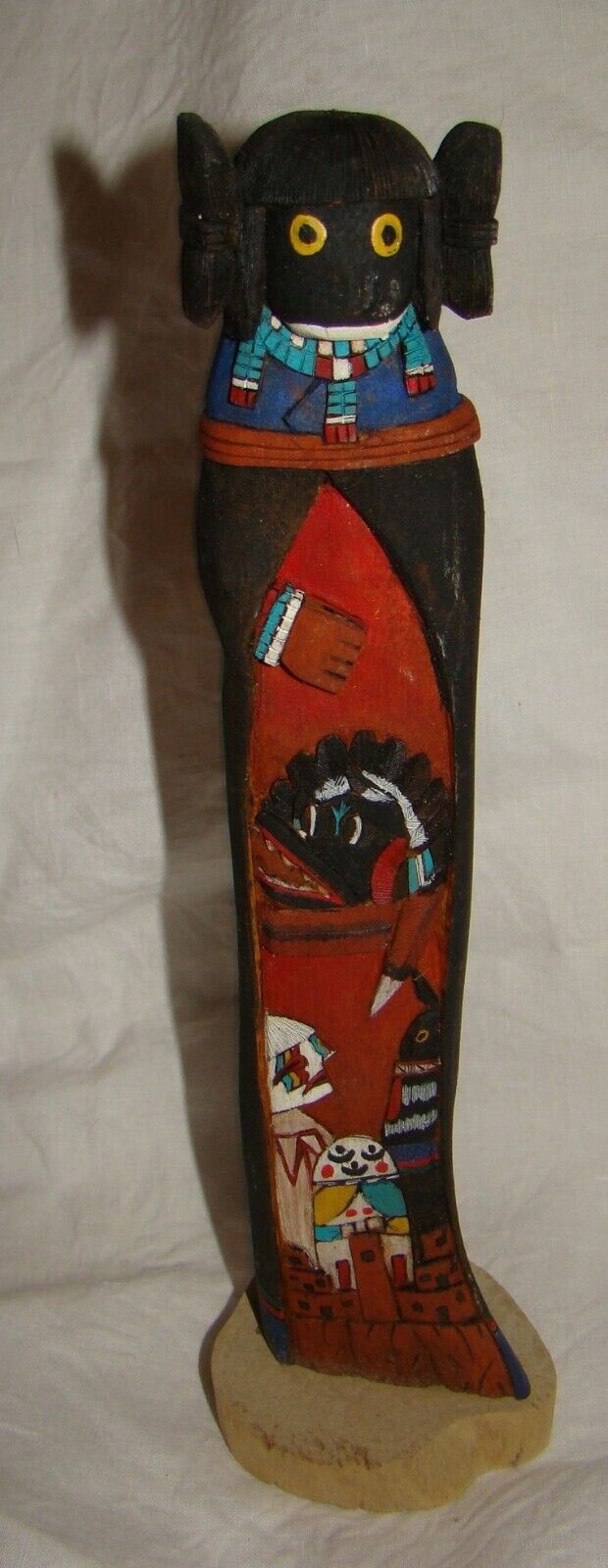
Soyok, also known as the Black Ogre, is a hideous character with a black head, large eyes, spikes, and feathers. The Black Ogre appears in this form to punish mischievous kids. According to legend, parents ask the Soyok Kachina to help discipline their kids.
The Kachinas will appear in numbers, assign impossible tasks to the children, and promise to return in a few days. The children will not have completed the tasks by the time they return, and the Kachinas will demand that they be eaten.
Parents will decline, and instead appease Soyok with lots of food. Children are typically less mischievous following this experience.
Eagle Kachina Doll
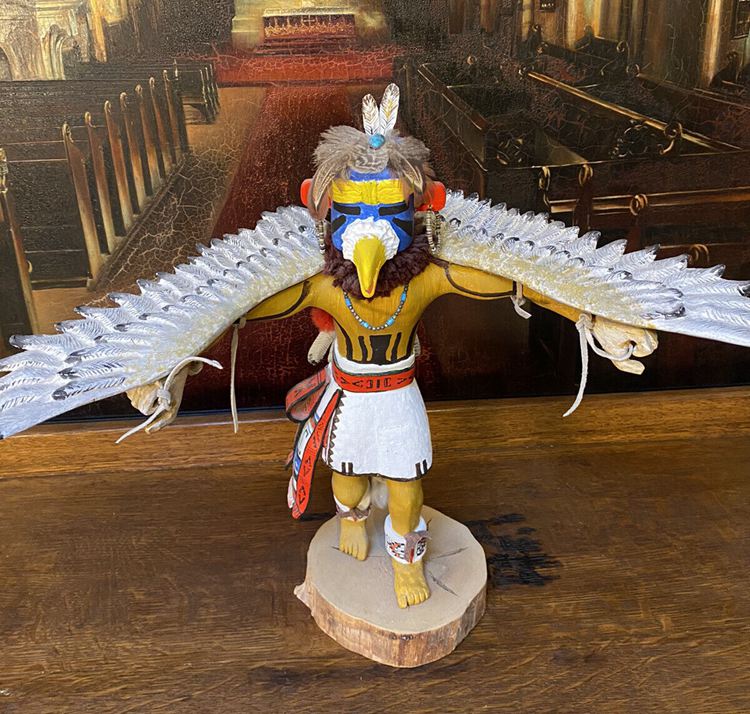
One of the most popular Kachinas is the Eagle Kachina doll. It is a Kachina doll made by the indigenous Navajo people, and one of the most difficult designs to carve.
It signifies power and strength. The Eagle Kachina is believed to be the ruler of the sky and a messenger to the spirit world. It is also regarded as the protector of all.
Hoop Dancer Kachina Doll
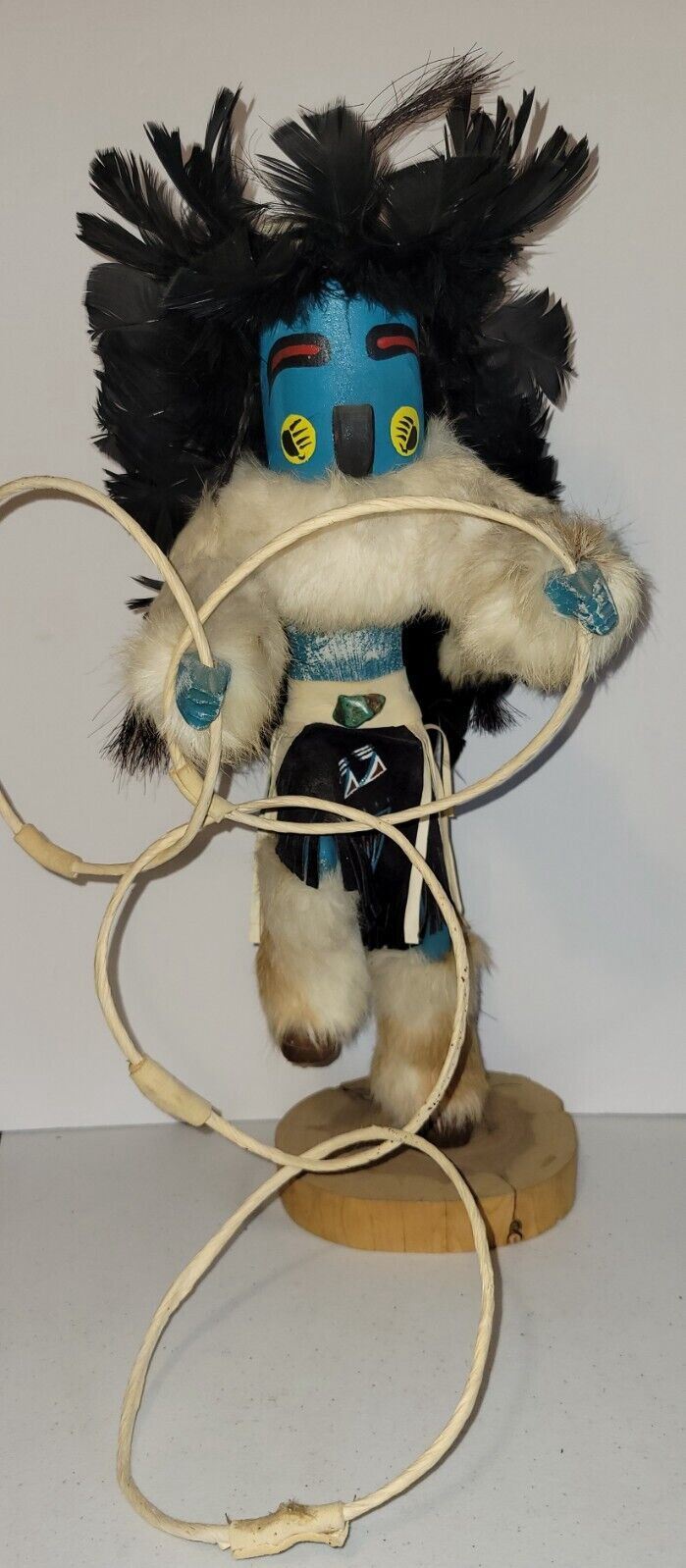
Another Navajo carved doll is the hoop dancer kachina, which depicts a circus jester juggling many rings. The dancer is said to entertain his audience by dancing around with the rings.
The rings are thought to be magical, representing the circle of life. The dancer symbolizes grace and talent.
Hemis Kachina Doll
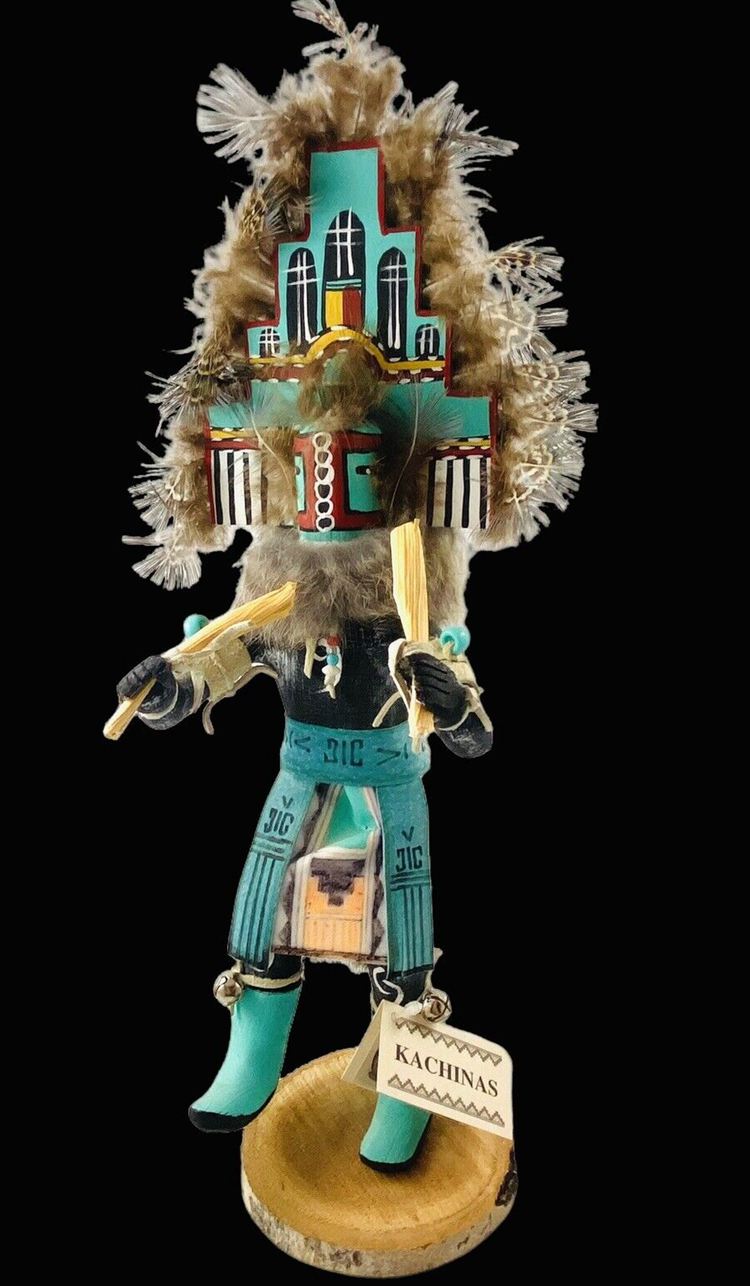
The Hemis kachina is considered one of the most beautiful Hopi katsinas. In a collection or array of kachinas, the Hemis doll is usually the tallest and most colorful, due in part to its tablet (head-dress).
The doll is a significant reminder that success or good fortune comes to those who work hard and dedicate themselves.
Hemis, in essence, serves to increase one’s luck and encourage good fortune. Non-Hopi people interested in purchasing this doll will have to do so without the back and top of the mask due to US Federal regulations regarding the sale of Hemis Kachinas.
Wolf Kachina Doll
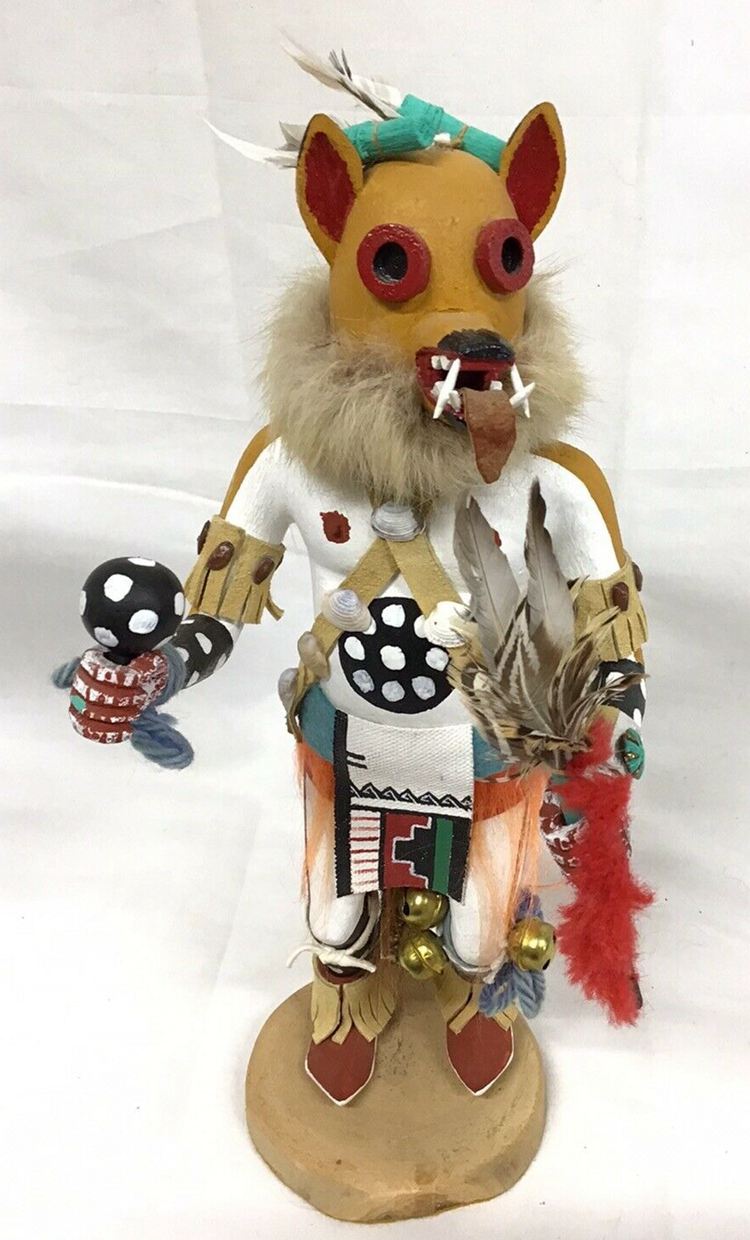
Navajo Native Americans also created the wolf kachina doll, which represents a hunter’s guide. It aids Navajo natives in their hunt for animals and also serves as a guide to warn them in the event of danger.
Bear Kachina Doll
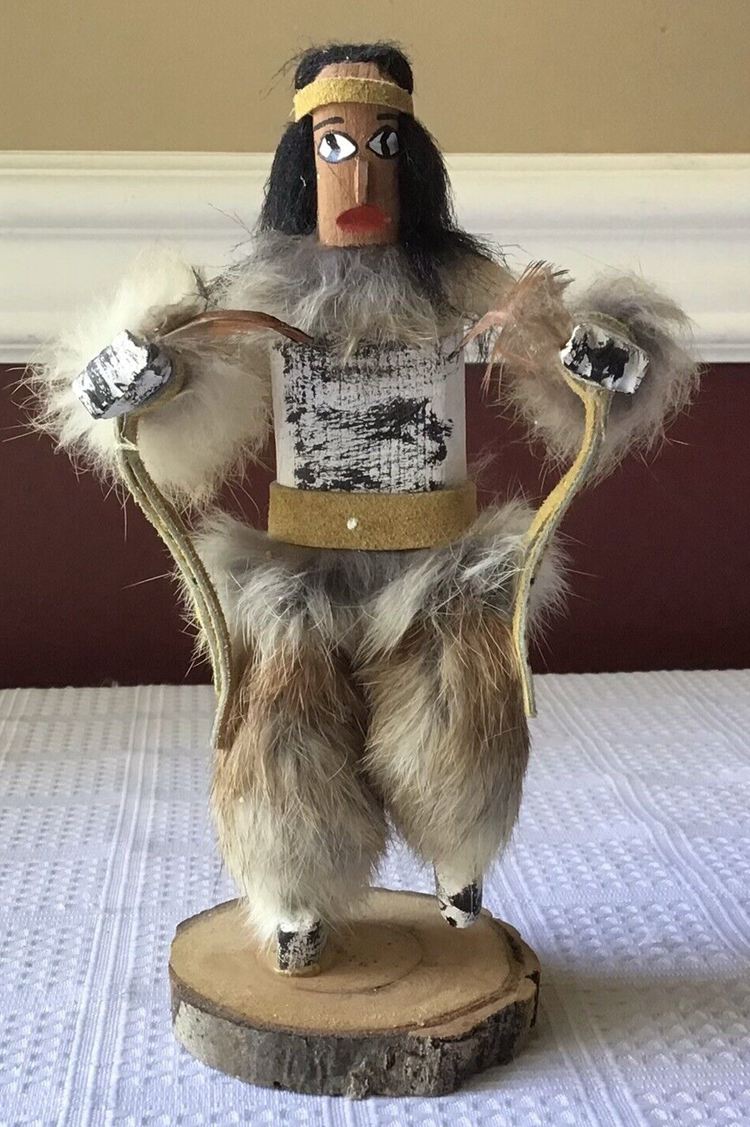
The bear kachina doll is another Navajo-made doll. It is said that the bear doll possesses great strength, which he uses to protect his people and heal their illnesses. This doll represents strength, power, courage, wisdom, and healing.
The bear kachina is considered second only to the Badger Kachina in terms of healing power.
Identifying Antique Kachina Dolls
We previously stated that there are numerous Kachina dolls. Fraudsters can take advantage of this opportunity and produce a large number of Kachina doll replicas, copies that even pass for originals.
We will now discuss how to determine whether the Kachina doll you wish to collect or sell is authentic.
Materials Used in Making the Dolls
The first criterion in knowing if the doll is authentic is the material that was used in making the doll. The first people that made Kachina dolls, the Hopis, started making dolls with a single cottonwood root.
Hopis resided near three mesas in northeastern Arizona, and cottonwood trees were abundant in that region at the time.
Other materials used to give the dolls defining features at the time included kaolin clay, and over time, they began adding shells and feathers to depict different kachinas. Many of those details are now carved out and painted with modern acrylics.
The type of wood (root) used in carving the doll is the most crucial feature to look at to determine if it is authentic.
Body Features of the Dolls
Previously, Kachina dolls lacked defined body features. It wasn’t until the late action era (1945 to present) that they started giving them body features.
Everything was carved in a simple fashion. There were no defined arms or body parts, fingers were joined together, and heads were not distinguishable from the bodies.
So, if you possess a kachina figurine with a simple design, you may be holding an antique kachina doll. The earlier-made kachina dolls are now rare and quite expensive, so if you come across one, be sure to acquire it.
General Features
Generally, kachina dolls are made into four categories. The Putsqatihu is made specifically for baby girls usually under a year old. They are flat figures with just enough distinguishing characteristics to identify them as kachina dolls.
Then there are the Putstihu taywa’yla, which are designed for toddlers. These have 3-D faces. The Muringputihu is designed for infant girls. They have fully carved facial features and are cylindrical in shape.
The last is the Tithu; this is meant for Hopi girls aged 2 and up. The Tithu is a fully developed kachina doll that depicts the end of the child’s weaning period.
If you come across any of the above-mentioned dolls, you have most likely come across an authentic kachina doll.
The Doll’s Facial Characteristics
Antique Kachina dolls usually have either painted or carved eyes. Painted eyes can be rectangular, round, or pot-hooks. Carved eyes, on the other hand, can be either half-moons or pop eyes.
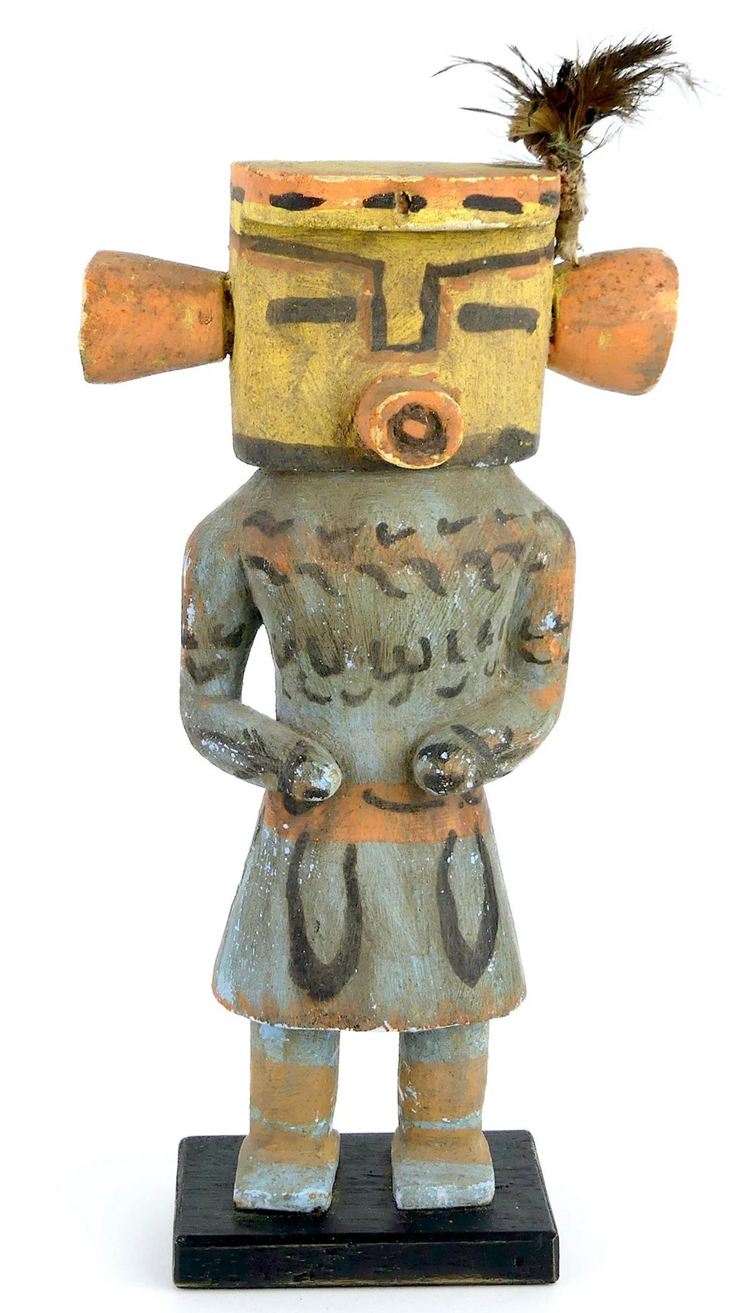
The dolls’ mouths, just like the eyes, can either be painted or carved. The painted mouth is rectangular, triangular, or crescent-shaped, whereas the carved mouth can be horizontal (wide or narrow beard comes with a horizontally curved mouth), a beak, a tube, or a short snout.
The heads of the figurines are usually adorned with bird wings, large red ears, corn husk flowers, hair, feathers, or horns.
Horns can be imitated or real animal horns. When it comes to noses, they only look realistic when they are carved. They rarely look real when they are painted.
There may also be beards made of feathers or red-dyed horse hair, though this is not always the case.
The facial characteristics described above will assist you in determining whether or not your doll is an original antique.
The Doll’s Regalia
Authentic Kachina dolls, the figures can be dressed in many different ways. The male figurines can be shirtless, wear a shirt (which may be velvet or white), a suit, or a ceremonial robe. The outfit (shirtless or not) typically includes a kilt, belt, sash, or fox skin.
The female garments may consist of a robe, a dress, or a shawl. They can also wear a manta or an eagle feather skirt with any of the robes, shawls, or dresses.
Figurines (male or female) may also be seen carrying one or more accessories that are associated with what they are known for.
Aside from the pointers listed above, you should also keep in mind that a real antique kachina doll will be made in such a way that the body proportions are defined.
There is no excessive detailing (like in the case of fingers, they might not have fingers, but they will have hands). It makes no difference whether it is the first kachina doll ever created or not.
Determining the Value of your Kachina Doll
Have you ever thought about how much your kachina doll was worth? Not to worry, you will learn how to determine the value of your kachina doll in this section. The value of your Kachina dolls depends on a variety of factors, including the doll’s type, condition, history, rarity, age, and size.
We have earlier discussed different types of kachina dolls. We would like to point out that the most expensive kachina dolls we carry are the traditional dolls, which are made by the Hopi.
Generally speaking, dolls with intricate carvings and decorations sell better than those without. That being said, antique kachina dolls are likely to have cracks and splits all over them.
Don’t be surprised if some of the dolls you find have broken parts. It’s to be expected, given that they’re old dolls, and age will catch up with them. It’s worth noting that intact antique dolls are far more valuable than those that aren’t.
Finally, the older the dolls are, the more valuable they are. However, it is uncommon to find dolls made prior to the 20th century, especially those with a well-documented history.
So, if you come across one of those, it is likely that they will not follow the standard kachina doll pricing. They are most likely to be more expensive.
Sample Kachina Dolls Values
Now that you know how to value your antique kachina dolls, let’s look at some antiques that have recently sold so you can get a current idea of the price listing of antique kachina dolls on the market.
Type of Doll |
Amount Sold ($) |
Date Sold |
Link to the listing |
2 Kachina Dolls |
400 |
June 16, 2022 |
|
Pueblo Indian Kachina Doll |
895 |
July 27, 2022 |
|
1988 Kachina Doll |
276 |
July 29, 2022 |
|
Hopi Kachina Doll |
650 |
July 27, 2022 |
|
A Used Antique Hopi Kachina Doll |
400 |
August 9, 2022 |
You can now have your antique kachina doll appraised for an accurate value knowing that you have some idea of what similar dolls are selling for in today’s market. A visit to a museum’s collection specialist can help you determine how much your item is worth.
Where to Buy/Sell Your Antique Kachina Doll Online
eBay or Etsy are your best bets for buying or selling your antique kachina doll online. You can trade your kachina dolls on these websites. eBay, in particular, allows traders to create or participate in auctions.
Always make sure you’re dealing with a verified account when making purchases or sales on these sites.
Frequently Asked Questions
1. What Does the Hopi word “Kachina” Mean?
Kachina means “life bringer” in Hopi, and they are also known as Katcina, Qatsina, Katsina, or Kachina.
2. What are the Most Significant Dolls in Mayan Culture?
The most significant dolls in Mayan culture are the Tawa Kachina, Hemis Kachina, and Masau Kachina.
3. What are the Most Popular Kachina Dolls?
The most popular dolls are the Tasapkachina, the Angakchina, and animal dolls like the Bear Kachina doll.
Conclusion
Identifying the meanings and values of different Kachina dolls might not be an easy task for everyone. We believe that after reading this article, you will be able to do so. If you have any questions, suggestions, or comments, please leave them below.





![Where To Sell Antique Furniture In 2022 [Ultimate Guide]](https://www.jacquelinestallone.com/wp-content/uploads/2022/09/Etsy-Your-Place-To-Buy-And-Sell-All-Things-Handmade-600x450.jpg)


